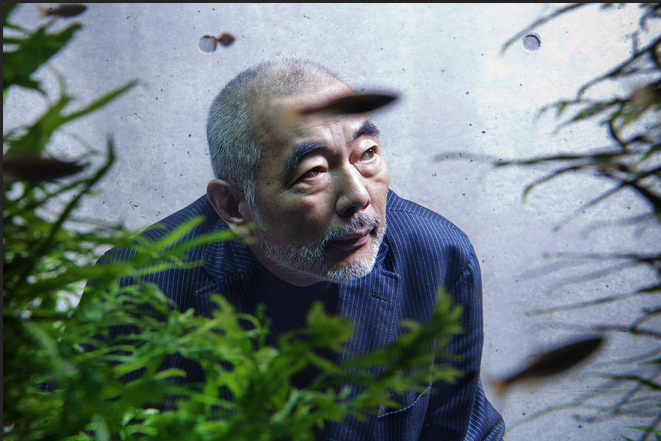Takashi Amano, the master of modern planted aquarium design and a man we have much respect for, was recently featured in the Wall Street Journal. The “Sage of Aquariums” mastered the art of taking an aquarium and creating lush landscapes that mimicked and even surpasses those we see in nature. His aquascaping techniques are often imitated and has inspired the planted community. Amano took his inspiration and founded ADA in 1984 to sell the equipment he used and often created to do the underwater magic he creates. Make sure you read all about it at the WSJ.
[via WSJ]
A mysterious, white growth has been attacking corals in some Hawaiian bays and have marine biologists puzzled and alarmed. Scientists at the U.S. Geological Survey say the growth has been identified as both a cyanobacterial pathogen and a fungus that has affected up to 40% of corals in reefs in bays on Kauai’s north shore. Deadly to coral it strikes, the invader is moving at the rate of 1 to 3 inches a week on every area of infected coral, scientists said.
[via UPI]
A robot just set a record by travelling more than 10,000 miles in the ocean travelling from San Francisco to Australia powered by just waves and sunlight. The robot named “Papa Mau” is a wave glider developed by Liquid Robotics, a Silicon Valley startup. Packed with sensors and computer processors the robot collected terabytes of data on ocean and atmospheric conditions. It took a year for the 7-by-2-foot titanium-framed fiberglass robot to reach Queensland. Now the team gets to sift through all the data and work on the next generation of wave gliders.
[via Forbes]
http://youtu.be/ycHt8De_S1w
This is a fascinating video from National Geographic that reminds us “Why the Oceans Matter.” As the description states “Covering 72 percent of the Earth and supplying half its oxygen, the ocean is our planet’s life support system—and it’s in danger. Watch this video to learn why a healthier ocean means a healthier planet, and find out how you can help.”
A sparsely populated chain of islands in the central Pacific Ocean is providing new clues about the changing acidity of ocean water and its potential impact on the health of coral reefs, a rising threat to already-fragile coral ecosystems. This study by the Scripps Institution of Oceanography tested feedbacks to ocean chemistry at the Line Islands through field deployments of school desk-sized, pyramid-shaped tents over diverse coral reef “footprint” areas. The interesting study utilized sensors within the enclosed chambers to measure the water chemistry every five minutes during 24-hour testing cycles. The results revealed details about day-to-day swings in pH and how those natural fluctuations may be affected by the health of the underlying reefs.
[via Scripps Institute]
http://youtu.be/NerDqBkS8E4
Even the rich and famous in Malibu can’t escape from nature as a 40,000 carcass of a blue whale is rotting and stinking up a private beach in Malibu — just steps away from celebrity homeowners. The carcass is too far along the decomposition process to be dragged away, plus even at high tide boats would have a hard time getting into the area without grounding. Officials are looking at whether to bury it (hard to do on rocky shore) or what other options are open. One big question is who’s problem is it since the whale washed up on a private beach.
[via NBC News]
European catfish have learned how to kill pigeons by stranding
themselves onto the beach to capture their prey. Reaching sizes up to
1.5 meters the European catfish are some of the largest freshwater
fish found on the continent, but this group of catfish have a lot more
going for them than their size. Located in Southwestern France the
group of catfish have learned to launch themselves partially onto the
beach to grab pigeons taking a drink, behavior similar to that seen
with Argentinian killer whales and bottlenose dolphins from South
Carolina. Julien Cucherousset a biologist looking into the matter
managed to capture footage of the catfish in action, but researchers
are still not sure what prompted this unusual behavior.
[via Discover]
Siamese fighting fish are particularly known male on male
aggressiveness, and recently scientists made an interesting discovery
about their fighting behavior. Because Siamese fighting fish originate
from waters which are low in oxygen they have adapted a secondary
organ that allows them to breathe in air, but in turn the the gills
have become smaller. As a result Siamese fighting fish have to
regularly come to the surface to breathe for air, which can pose a
problem when you are in the middle of a very intense fight. Puzzled by
this question Dr. Steven Portugal of London’s Royal Veterinary College
looked into the matter and discovered that male Siamese fighting fish
take a mutual break during fights to take a breath of air, a short
“time out” so to say. Although it poses a mutual benefit it is quite
funny that they have such a gentleman’s agreement.
[via BBC]







